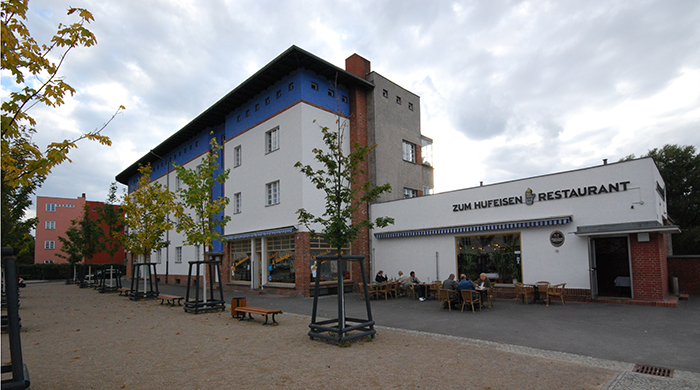Text & images: Cosmin Caciuc
In believe that, at this moment, from a strictly historiographic point of view, both progressive ideology and cultural resistance may find a different kind of civic balance in what I would generally call the urbanity that reclaims the past of modernity, leaving behind the stereotypes of the antagonism which arised with the Modern Movement, based on the new (industrial) city versus the old (preindustrial) city.European Union Prize for Cultural Heritage / Europa Nostra Awards in 2013 offer a series of very good examples of reclaiming the past of modernity. I would like to mention only three of these projects, ones that have gathered recognition in the Conservation section – the last two being published right in this issue of our magazine: the conversion of seaplane hangars from Talinn, Estonia, into a Maritime Museum; the extension of the King’s Cross Station in London; and the restoration of architect Bruno Taut’s house, which is part of the interwar Hufeisensiedlung ensemble, in Neukölln-Britz, Berlin.
Although modernity has enabled its own history in the built environment, next to the old/preindustrial history, we have not reached yet a public consensus as to the balance between the progressive ideology and the cultural resistance which adheres much too easily (or too nostalgically) only to old history, eluding controversies. In the case of King’s Cross, for example, the high-tech extension, although honest due to its structural attitude, is hardly accepted by the partisans of pure preidustrial images. The failure to reach an agreement redirects the current purpose of architectural theory towards reevaluating the pluralism of built environment politics from an ethical point of view: identifiable collective views, pertinent social values, consistent examples of good practice and efficient support of action. Theory can no longer be disengaged and reduced to detached (no less elitist) discussions about aesthetics. Reevaluation implies interpretations which are commited on the grounds of critical modernity experience, and the exceptional example of the Hufeisensiedlung ensemble, which has also survived the harsh trial of time, may inspire us from the highest levels – political, administrative, social, cultural, psychological, urbanistic, architectural – to the lowest, but no less important, levels of practical details for design and for a harmonious daily life.


